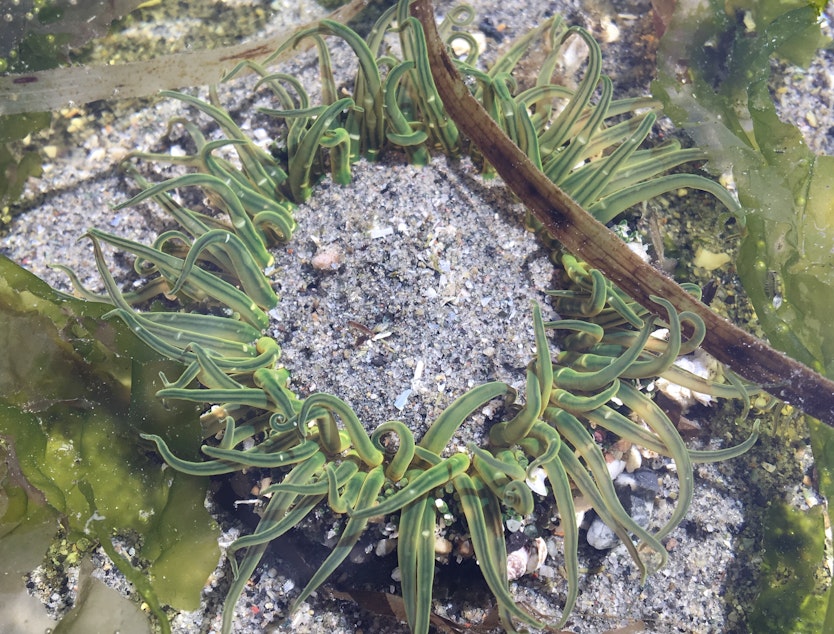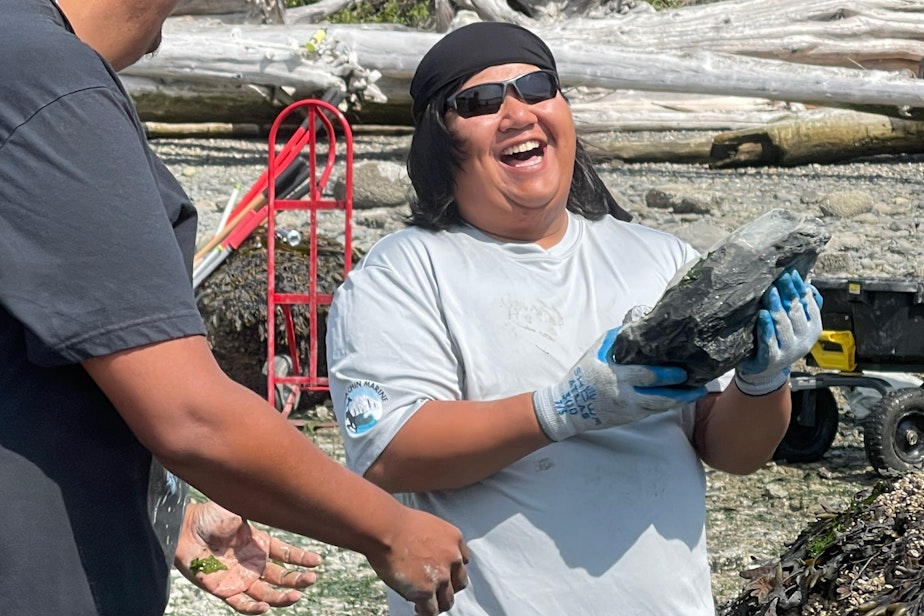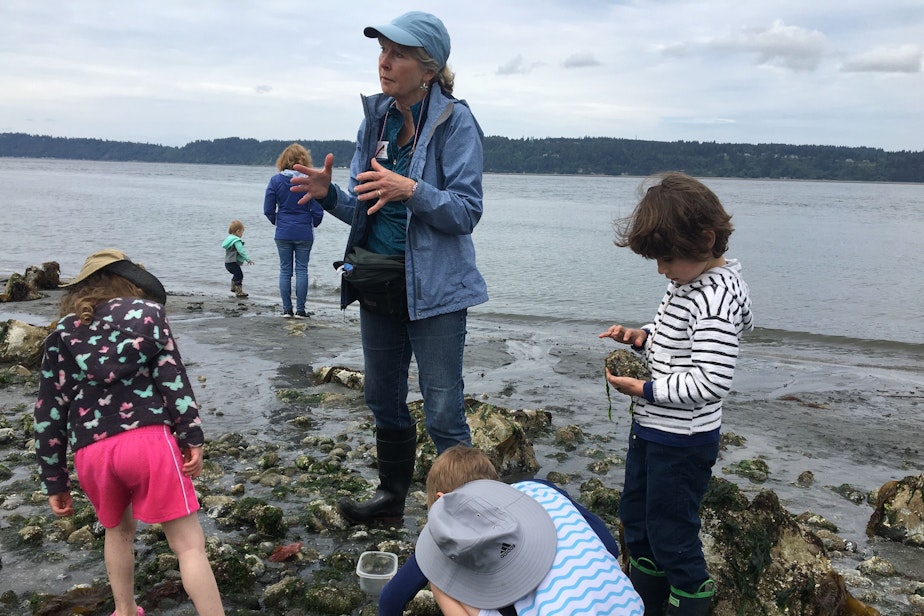Year's lowest tides coming to Puget Sound

The lowest tides of the year are coming to Puget Sound starting this weekend.
Sea level in Seattle on Monday and Tuesday is expected to bottom out nearly four feet below the typical low tide.
Slightly lower tides are forecast for July 3-5.
The temporarily retreating shoreline will expose acres of seldom-seen tidelands.
“These low tides are a great opportunity to go out and see environments, habitats, places that are typically covered with water, that we don't typically get to visit unless we are willing to snorkel or scuba dive,” said Washington Sea Grant oceanographer Ian Miller.
Beach naturalists—tidepool experts—will be on hand at many beaches in King County Sunday through Thursday to help visitors appreciate the squishy, salty creatures all around and avoid harming them.
On Monday, members of the Swinomish Tribe plan to take advantage of the extra-low water to resume construction of the United States’ first modern clam garden on the tribe’s reservation near Anacortes.
“There's only certain tides, certain days of the year, that we can actually go out and see it,” said Swinomish Tribal Senator Alana Quintasket.
On a low tide in August, Swinomish tribal members and other fans of traditional Indigenous aquaculture gathered on Kiket Island on the Swinomish Reservation. They hand-placed 33 tons of rocks into a knee-high wall designed to trap sediment and boost production of butter clams and littleneck clams.

The Swinomish Tribe is hosting a summit of Indigenous aquaculture practitioners from around the Pacific, with work to add another 10 tons of rock to the Kiket Island clam garden a focal point.
“We have a responsibility to take care of the clams and to make sure that they have the best environment possible to thrive, especially approaching the climate crisis coming into these hot, hot summers,” Quintasket said.
The event features a traditional beach clambake for the few hundred guests.
"We definitely have to outsource for the big clambakes," Quintasket said. "Our [clam] beds aren't that bountiful yet."
Exceptionally low tides can be exceptionally stressful times for organisms like clams, sea anemones, and nudibranchs that are rarely exposed to air.
In 2021, afternoon low tides combined with a record-shattering heat dome to kill hundreds of millions of barnacles and other sea creatures on Washington and British Columbia shores.
Some shellfish farmers on South Puget Sound reported losing 90% or more of their tiny, hard-shelled livestock.
A lesser heatwave in May 2023 prompted the Washington Department of Health to ban commercial shellfish harvesting anywhere local water temperatures exceed 70 degrees to protect consumers from bacteria that thrive in warm water.
Fortunately for sea creatures and the people who raise or eat them, air temperatures are not expected to reach anywhere near the triple digits they did in June 2021.
As of Friday afternoon, the National Weather Service was forecasting highs close to 70 degrees Fahrenheit Saturday through Monday for Seattle, and in the upper 70s to low 80s Tuesday through Thursday.
According to the National Weather Service, the normal high temperature in Seattle for the first week of June is 69 degrees.
Marine biologists urge any tide-pool visitors to tread carefully and avoid poking, lifting, or trampling the creatures that make tide pools a place full of wonder. And leave Fido at home.
Globally rising sea levels thanks to climate change make tides this low an increasingly rare event.
Editor’s Note 3:55 p.m., 6/8/23: An earlier version did not mention July’s low tides, expected to be the lowest in 2023. While June’s low tides are the lowest to date this year, slightly lower tides are forecast for July 3-5.


